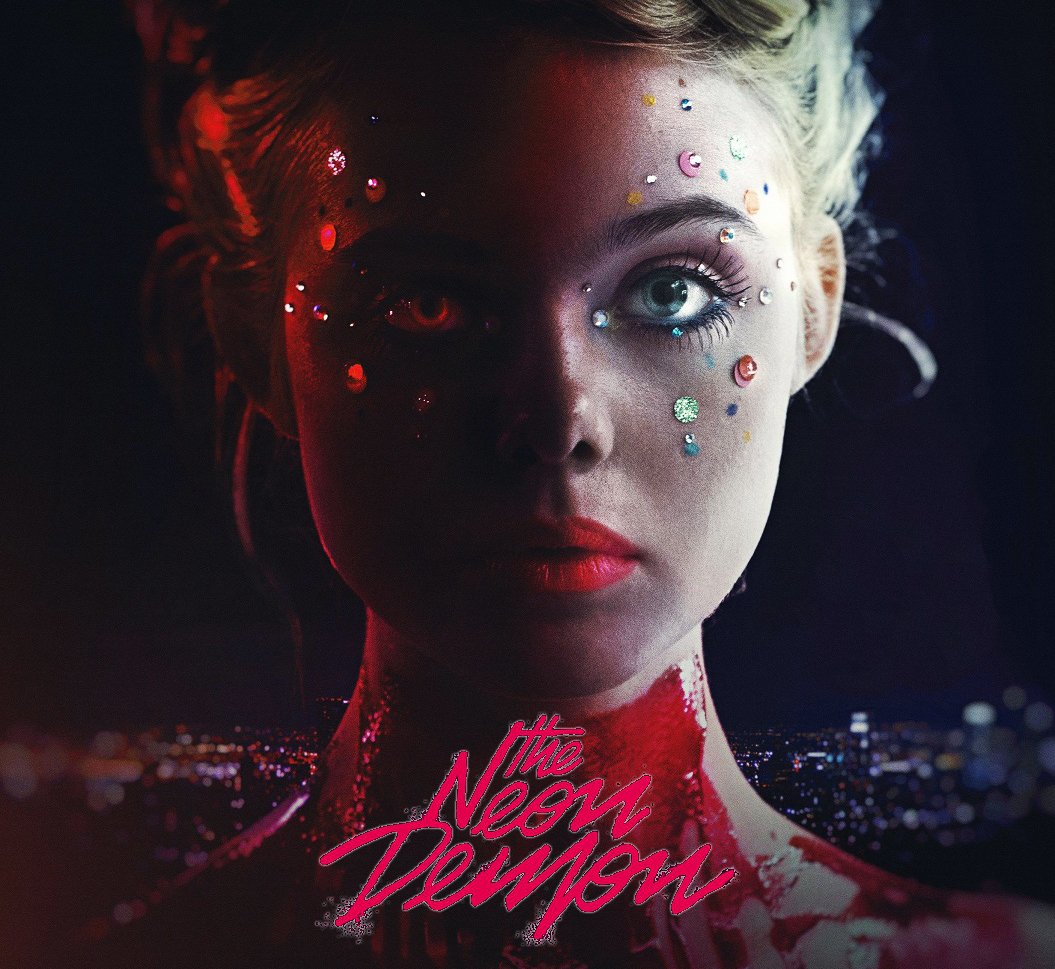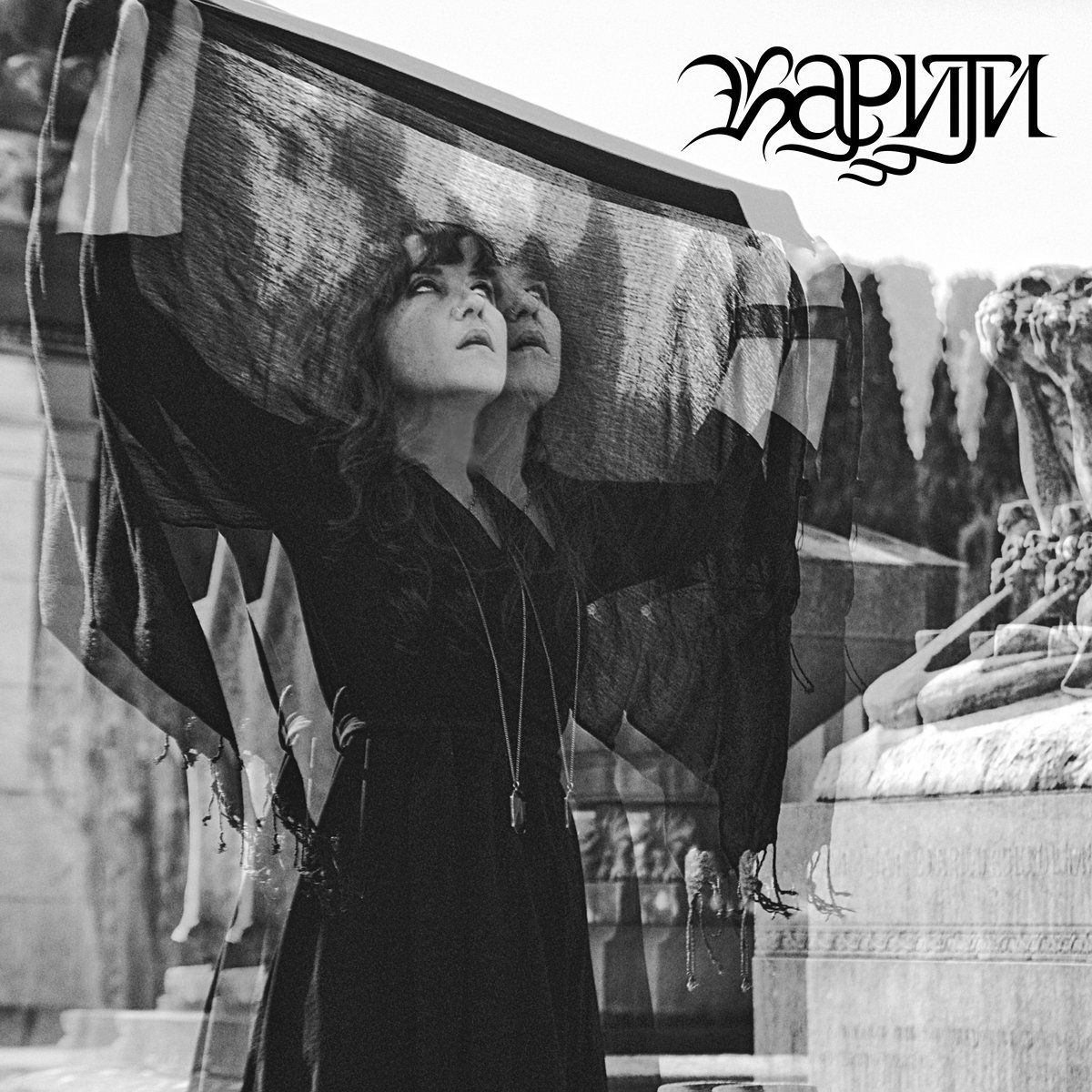The Neon Demon (2016) – The Wicked Die Young
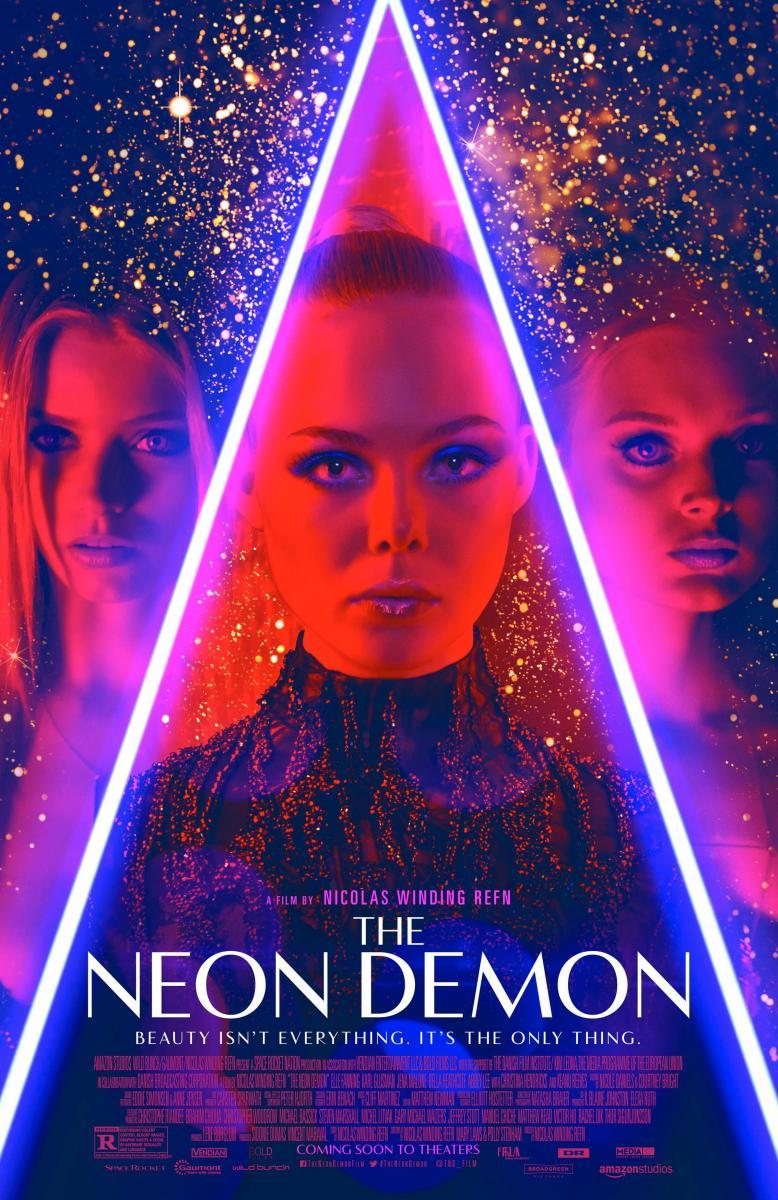 Some people think I’m too slow. What’s the point of reviewing something if it was released months ago? Well, I actually analyze what I review, and that takes time, and hey, who doesn’t mind a publicity push after the fact? I can fly through albums pretty quickly, but for films and video games, there’s more to consider. The full experience is a necessity; far too many “critics” give their opinion in this age of “we must provide now” without truly understanding. Speed equals a lack of clarity and quality. That’s where I come in. I sit on the edges of society; I watch, I consume what catches my attention, I weed out all the flesh and dig down to the blood. Thus, you can be sure that anything appearing here is all you need to consider. I sift through the trash so you don’t have to, I find the succulence in piles of filth, and on my words you must survive. So, now, for our next experience let’s considering the controversial and divisive film The Neon Demon (2016), and with this the special inspirational soundtrack released by the director, titled The Wicked Die Young (2017).
Some people think I’m too slow. What’s the point of reviewing something if it was released months ago? Well, I actually analyze what I review, and that takes time, and hey, who doesn’t mind a publicity push after the fact? I can fly through albums pretty quickly, but for films and video games, there’s more to consider. The full experience is a necessity; far too many “critics” give their opinion in this age of “we must provide now” without truly understanding. Speed equals a lack of clarity and quality. That’s where I come in. I sit on the edges of society; I watch, I consume what catches my attention, I weed out all the flesh and dig down to the blood. Thus, you can be sure that anything appearing here is all you need to consider. I sift through the trash so you don’t have to, I find the succulence in piles of filth, and on my words you must survive. So, now, for our next experience let’s considering the controversial and divisive film The Neon Demon (2016), and with this the special inspirational soundtrack released by the director, titled The Wicked Die Young (2017).
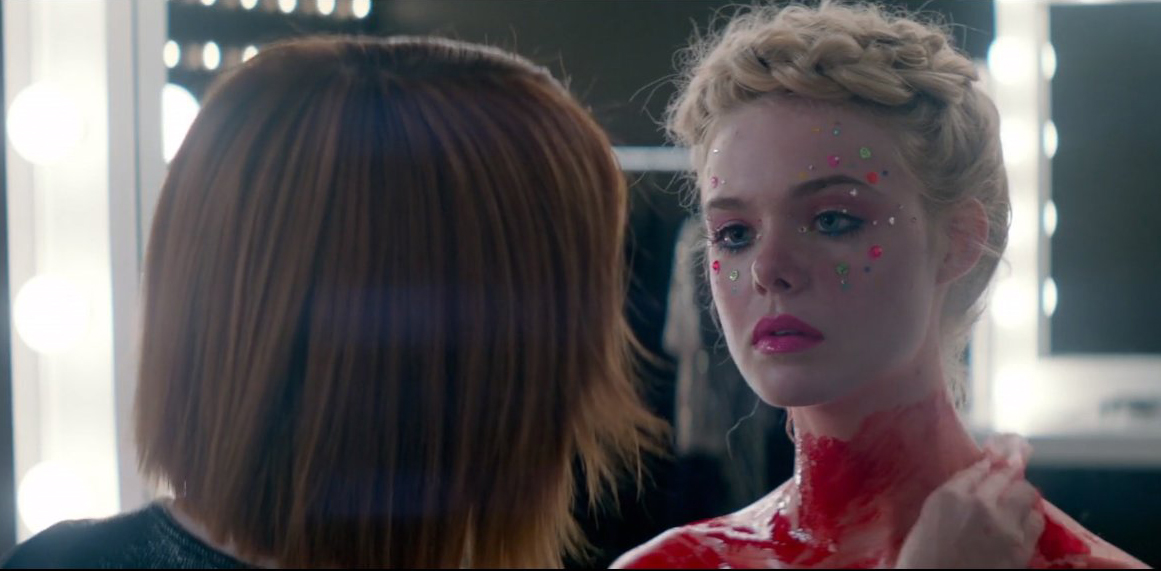 I first heard of The Neon Demon from a friend, who hailed it as one of the greatest modern films. The director, Nicolas Winding Refn, has received critical acclaim for much of his work, including the crime noir Drive (2011). I had only briefly sampled his work until The Neon Demon, mainly because I had too much of an anime backlog, but after hearing someone compare it to Carmilla (1871/1872), I decided to delve further. This, friends, is a work rarely seen or discussed in our modern industry, where films of the auteur quality are generally overlooked by the majority, who would rather consume mass-market garbage to escape their empty lives. This division between commercial and auteur has been around awhile, but films like The Neon Demon make it clear why we should all, now and again, pay attention to what’s on the outside.
I first heard of The Neon Demon from a friend, who hailed it as one of the greatest modern films. The director, Nicolas Winding Refn, has received critical acclaim for much of his work, including the crime noir Drive (2011). I had only briefly sampled his work until The Neon Demon, mainly because I had too much of an anime backlog, but after hearing someone compare it to Carmilla (1871/1872), I decided to delve further. This, friends, is a work rarely seen or discussed in our modern industry, where films of the auteur quality are generally overlooked by the majority, who would rather consume mass-market garbage to escape their empty lives. This division between commercial and auteur has been around awhile, but films like The Neon Demon make it clear why we should all, now and again, pay attention to what’s on the outside.
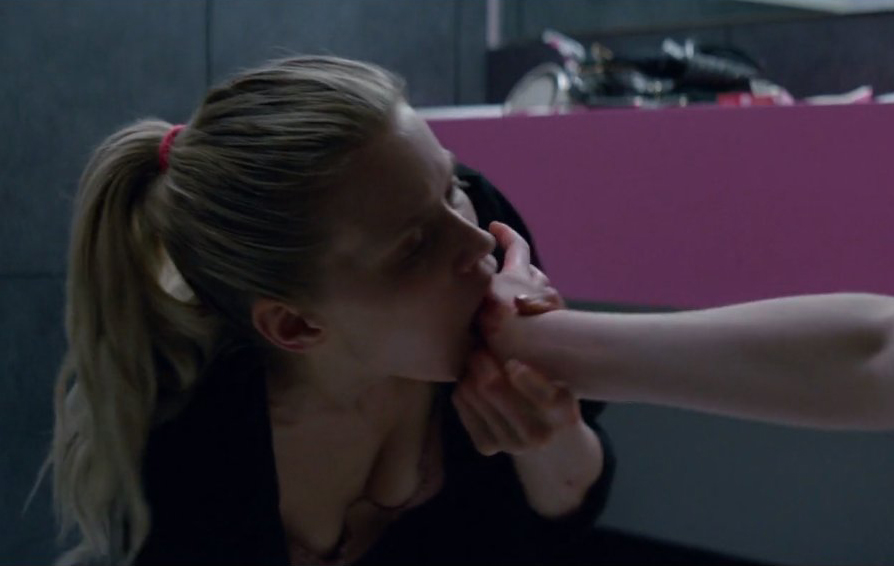 The basic premise is a young, aspiring model, Jesse (played by Elle Fanning), moves from her rural fantasy-land to Los Angeles in hopes of making a living on her beauty. Fanning perfectly captures this sense of rural-to-urban fantasy as Jesse’s natural features draw her in to the world of modeling, where she becomes entangled in the lives of three main women, two models and one makeup artist that moonlights at a morgue, who turn out to be a tripartite of occultists, or perhaps vampires, though their actual identities are never revealed beyond their positions in the fashion industry. What ensues is bizarre ritual, sacrifice, sexual stimulation through corpses, and the main concept of being “devoured” by this world of fashion, as the quasi-vampire women seek to consume Jesse’s beauty. In terms of idea, it’s incredible, taking the classic concept of such a lifestyle destroying the identity of the individual and symbolizing it through modern interpretations of the supernatural that are evident, but highly subtle. The film’s soundtrack, by industry legend Cliff Martinez, is an easy 4.5 / 5 with its hypnotic darkwave constructions and light electronica.
The basic premise is a young, aspiring model, Jesse (played by Elle Fanning), moves from her rural fantasy-land to Los Angeles in hopes of making a living on her beauty. Fanning perfectly captures this sense of rural-to-urban fantasy as Jesse’s natural features draw her in to the world of modeling, where she becomes entangled in the lives of three main women, two models and one makeup artist that moonlights at a morgue, who turn out to be a tripartite of occultists, or perhaps vampires, though their actual identities are never revealed beyond their positions in the fashion industry. What ensues is bizarre ritual, sacrifice, sexual stimulation through corpses, and the main concept of being “devoured” by this world of fashion, as the quasi-vampire women seek to consume Jesse’s beauty. In terms of idea, it’s incredible, taking the classic concept of such a lifestyle destroying the identity of the individual and symbolizing it through modern interpretations of the supernatural that are evident, but highly subtle. The film’s soundtrack, by industry legend Cliff Martinez, is an easy 4.5 / 5 with its hypnotic darkwave constructions and light electronica.
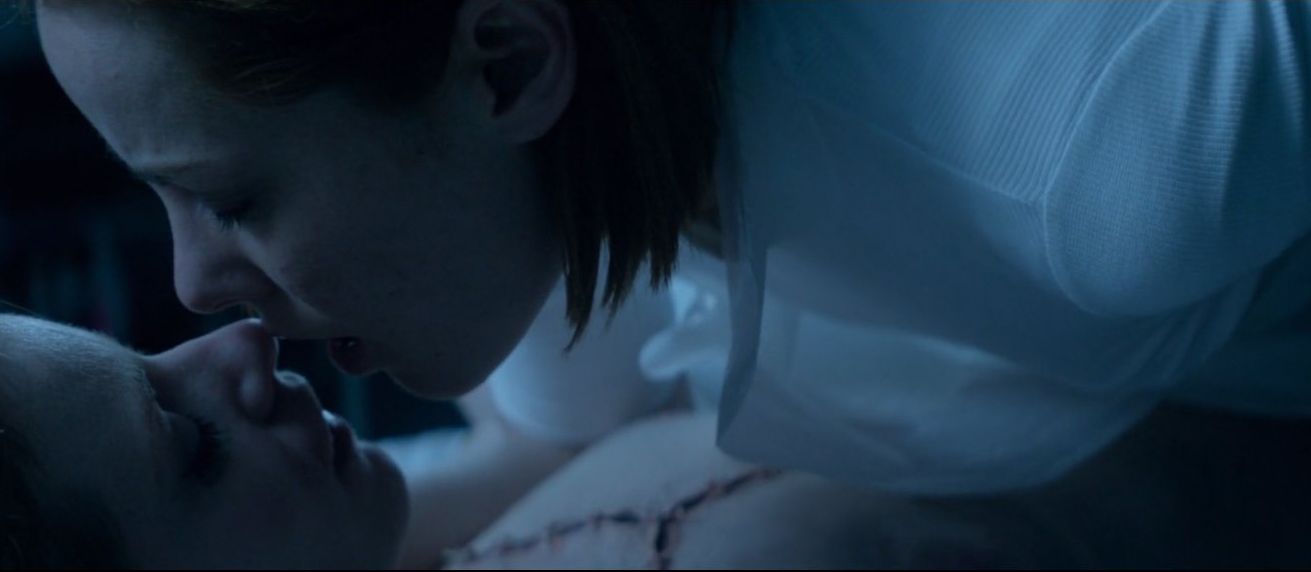 The film itself received both praise and hatred upon its initial release, and it’s easy to see why, because at times it’s far too subtle with its message. Scoring it, even after understanding it, I would place it no higher than a 4 / 5. The story is often merely shown, not told, leaving the viewer to dig through context to understand any of it. With its hypnotic visuals, and focus on what you see instead of what you’re told, at times it can often be a confusing form of artistry that will easily turn off the average viewer. As the symbols start to come together, however, and the scenes that seem poorly-developed connect with others, the big picture finally forms in and the beauty of this film manifests. It was an interesting experience, to say the least, for at first, after finishing it, I nearly hated The Neon Demon, but as I engrossed myself in reviews, descriptions of scenes and their conception during production, and especially the inspirational soundtrack I’m about to get to, I was led to a realization of the greater meaning behind what can, at times, seem a confusing muddle of symbolism. The UK trailer below makes it seem far more accessible than it actually is, perhaps almost mainstream.
The film itself received both praise and hatred upon its initial release, and it’s easy to see why, because at times it’s far too subtle with its message. Scoring it, even after understanding it, I would place it no higher than a 4 / 5. The story is often merely shown, not told, leaving the viewer to dig through context to understand any of it. With its hypnotic visuals, and focus on what you see instead of what you’re told, at times it can often be a confusing form of artistry that will easily turn off the average viewer. As the symbols start to come together, however, and the scenes that seem poorly-developed connect with others, the big picture finally forms in and the beauty of this film manifests. It was an interesting experience, to say the least, for at first, after finishing it, I nearly hated The Neon Demon, but as I engrossed myself in reviews, descriptions of scenes and their conception during production, and especially the inspirational soundtrack I’m about to get to, I was led to a realization of the greater meaning behind what can, at times, seem a confusing muddle of symbolism. The UK trailer below makes it seem far more accessible than it actually is, perhaps almost mainstream.
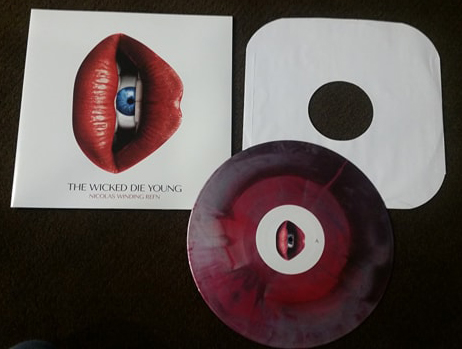 As part of this experience, I decided to purchase the special LP set from Nicolas Winding Refn via Milan Records. Refnd has done several “presented by” collections over the past few years, which I’m only vaguely familiar with. The Wicked Die Young is a collection of various tracks that inspired the creation of The Neon Demon, organized by Refn. Two of the tracks are new, the rest are from various eras and capture almost everything you can think of from the 1960s and 70s include proto-punk and French disco. One song in particular is the opening theme of Blood for Dracula aka Andy Warhol’s Dracula (1974), providing a clear vampire link to The Neon Demon. The eclectic mix, though much unlike what you’re used to seeing on this site, is unique in that it provides the listener, who likely viewed the film, with an aural landscape that consumed the director as he created it. Refn indicates this clearly in the liner notes, noting that each song represents a specific emotion and that he wanted the film to have an atmosphere of “camp, glitter, and vulgarity.” Listening through The Wicked Die Young was another level of experience of the film, more of an attachment to the mind of who created it, which then led to a realization of its beauty and meaning. The packaging is beautiful, the main image a reference to a key scene near the end, and featuring two purple/red splatter-vinyl records with all the tracks. Taking all these things together, Refn has created not merely a film, but an experience, and this is a hallmark of greatness these days, but something too far of us engage in.
As part of this experience, I decided to purchase the special LP set from Nicolas Winding Refn via Milan Records. Refnd has done several “presented by” collections over the past few years, which I’m only vaguely familiar with. The Wicked Die Young is a collection of various tracks that inspired the creation of The Neon Demon, organized by Refn. Two of the tracks are new, the rest are from various eras and capture almost everything you can think of from the 1960s and 70s include proto-punk and French disco. One song in particular is the opening theme of Blood for Dracula aka Andy Warhol’s Dracula (1974), providing a clear vampire link to The Neon Demon. The eclectic mix, though much unlike what you’re used to seeing on this site, is unique in that it provides the listener, who likely viewed the film, with an aural landscape that consumed the director as he created it. Refn indicates this clearly in the liner notes, noting that each song represents a specific emotion and that he wanted the film to have an atmosphere of “camp, glitter, and vulgarity.” Listening through The Wicked Die Young was another level of experience of the film, more of an attachment to the mind of who created it, which then led to a realization of its beauty and meaning. The packaging is beautiful, the main image a reference to a key scene near the end, and featuring two purple/red splatter-vinyl records with all the tracks. Taking all these things together, Refn has created not merely a film, but an experience, and this is a hallmark of greatness these days, but something too far of us engage in.
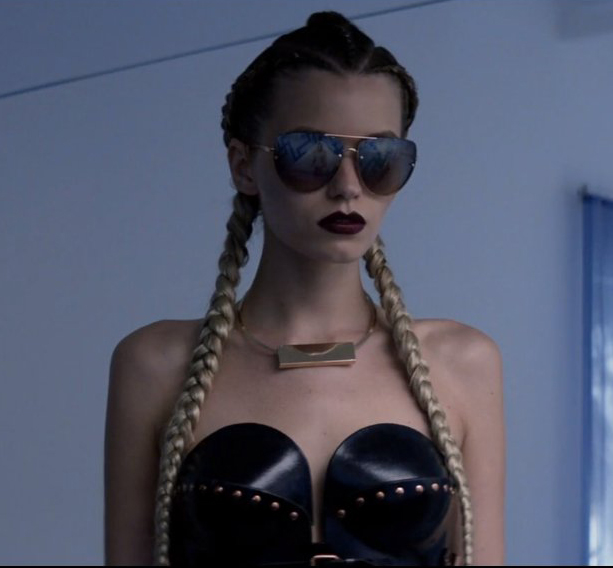 The Neon Demon is not simply a film, it’s an experience that connects sight and hearing. In fact, without this connection it will likely disgust even the most underground of viewers. One cannot simply view the film itself, there is an entire world to enter of which the film is only but a part. It is the strongest piece of all of it, but cannot be experienced alone, or even just once. And its usage of the various strata of society, including the incredible performance by supermodel Abbey Lee (pictured at right, and earlier drinking blood from Jesse’s hand), draws together big ideas that may lack clarity at first, but when they are understood become a powerful symbol of our times. If more films were made this way, requiring the viewer to made a conscious effort to understand and delve further, we perhaps as a culture would be more introspective, and better for it. For now, we can only consume each other as we attempt to better ourselves through selfish, and destructive endeavors.
The Neon Demon is not simply a film, it’s an experience that connects sight and hearing. In fact, without this connection it will likely disgust even the most underground of viewers. One cannot simply view the film itself, there is an entire world to enter of which the film is only but a part. It is the strongest piece of all of it, but cannot be experienced alone, or even just once. And its usage of the various strata of society, including the incredible performance by supermodel Abbey Lee (pictured at right, and earlier drinking blood from Jesse’s hand), draws together big ideas that may lack clarity at first, but when they are understood become a powerful symbol of our times. If more films were made this way, requiring the viewer to made a conscious effort to understand and delve further, we perhaps as a culture would be more introspective, and better for it. For now, we can only consume each other as we attempt to better ourselves through selfish, and destructive endeavors.
Written by Stanley Stepanic

